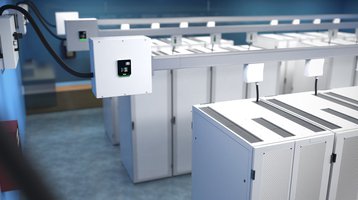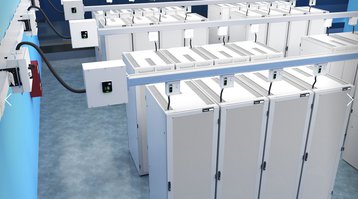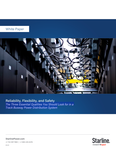Outages are the 'boogeyman' of the data center world.
A consequence of mishandled management and operations we are all trying to avoid, but unfortunately, one that continues to haunt the industry.
According to Uptime's 2022 Outage Analysis, high outage rates have continued, with 80 percent of data center managers experiencing some kind of outage in the past three years.
With so much of the globe reliant on data centers for mission-critical industries, it is no surprise that significant outages rarely go unnoticed by users and the media alike. 'Data center outage causes life-saving medical devices to stop working, hundreds dead' is a nightmare headline. Still, it is also becoming possible with the arrival of IoT-reliant medical devices.
But it isn't just a PR disaster. They are also extremely expensive. Uptime found that over 60 percent of outages result in over $100,000 costs, an increase from 39 percent in 2019. The share of outages that cost upwards of $1 million increased from 11 percent to 15 percent over that same period.
But what causes these outages?
According to the same research, power-related outages account for 43 percent of those classified as significant and causing downtime and financial losses.
In other words, having reliable power systems in your data center could reduce the chances of an outage by almost half. An essential part of your power system is its distribution throughout the facility.
Traditional Remote Power Panels (RPPs) are losing popularity as track busway systems push to the forefront of power distribution solutions. Busway systems eliminate the need to run power cables and whips under plenums in a raised floor. Therefore, airflow isn't obstructed (and, let's face it, no one ever needs to climb under the dusty floorboards to fix an issue. This is a wildly underrated pro of busway systems), as well as reducing the risks of arc flash incidents.
But the real benefits of track busway distribution systems come from their capacity to be reliable and flexible (and, yes, reduce the risk of outages).
Reliability
With the massive cost of downtime, and because wholesale data centers and colocation providers build their reputations around Service Level Agreements, reliability is essential to meeting uptime requirements.
Track Busway Systems, specifically the Starline Track Busway Power Distribution System, have a variety of features that help to contribute to the reliability of your facility's power supply.
A busway system can be considered an elevated highway (I like to imagine a toy race track suspended above the servers and racks), so a track busway is the different sections that make up that race track: straights and curves (elbows).
What sets aside the Starline system is that the track busway sections are all made of high-grade engineered materials with a lightweight aluminum housing and either 99 percent pure copper or copper-contact aluminum roll-formed busbars and the maintenance-free joints.
The underneath is open, allowing you to access and insert plug-in units throughout, making it easy to add more capacity or change branch circuit amperage.
Many busway systems use bolted joints or male/female couplings, which are not as reliable as compression joints. They are easy to install incorrectly and, when not quite right, can cause poor electrical connections or even lead to the joint heating up and risking a fire.
Starline's busway joints, on the other hand, are made specifically to maximize reliability through the use of 'compression-fit' joins. According to Starline, failures of these joints are virtually unheard of, and it is 100 percent maintenance-free.
Almost too good to be true. Almost.
It is reassuring to know that, in theory, your busway is safe and reliable 100 percent of the time. But as human beings, we know that nothing is inevitable, and when it comes to such a crucial risk, leaving things to themselves and just hoping for the best doesn't seem very sensible.
Starline's Track Busway system has a critical power monitor that tracks power and temperature data over time. Therefore, you never need to worry about whether the busway runs are working correctly, the joints are intact, and the servers are operating properly. You know they are.
Information is power, metaphorically speaking. The insights you get from monitoring your busway enable you to make informed decisions about your power consumption data. Meaning you can optimize power sustainability, all while making sure everything is working 24/7.
Flexibility
So you can rely on Starline, just like Andy can rely on Woody in Toy Story. But what about flexibility? Is the Starline Track Busway more stiff as a steel rod, or more flexible than American gymnast Simon Biles?
It's both. Sturdy in physicality and flexible in application.
Data centers are constantly changing. We had the boom where everything seemed to expand massively, and now we are seeing the rise in popularity of 'Edge' facilities. As a result, there is a lack of predictability regarding your data center's requirements, and the ability to quickly scale up or down can be a significant game-changer.
Busway systems, with various sections – different lengths, elbow and tee sections – mean you can build them to whatever your facility needs: an engineer's version of Lego.
Not only can the design and layout be customized to your requirements, but the Starline Track Busway also offers flexible options for where to place the power feed units. End feed units at the end of the busway, or above feed ones installed along the topside? Your choice.
Avoiding outages has to be a priority for your data center, and a robust power distribution system is a significant contributing factor. The Starline Track Busway system offers a solution that is flexible to your needs, reliable, and easy to use. What more do you need to know?
More from Starline
-
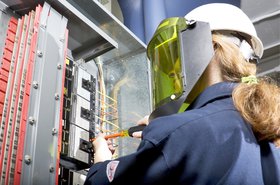
Sponsored Safety for employees: It shouldn’t be too much to ask
How a track busway power distribution system can help keep your employees – and IT equipment – safe
-

Sponsored New demands, new solutions
Safety, flexibility, performance: The key to successful power distribution in an increasingly demanding data center environment
-
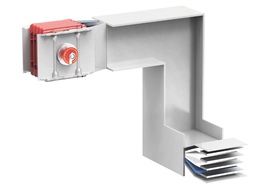
Sponsored Starline unveils new XCP high powered busbars
Expanding on an already extensive offering, Starline says its new XCP high powered busbars provide even the most demanding facilities with exceptional flexibility, performance and safety

